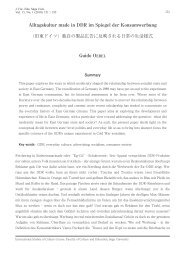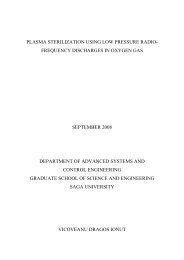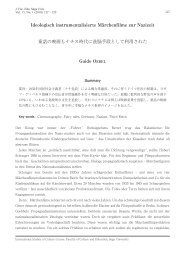High Order Harmonic Oscillators in Microwave and Millimeter-wave ...
High Order Harmonic Oscillators in Microwave and Millimeter-wave ...
High Order Harmonic Oscillators in Microwave and Millimeter-wave ...
- No tags were found...
You also want an ePaper? Increase the reach of your titles
YUMPU automatically turns print PDFs into web optimized ePapers that Google loves.
2 <strong>Oscillators</strong><br />
R<strong>and</strong>om phase<br />
variation<br />
Amplitude<br />
Discrete spurious<br />
signal<br />
f0<br />
f<br />
Fig. 2.6: Output power spectrum of a typical RF oscillator.<br />
or other r<strong>and</strong>om noise sources). Note (2.28) that an <strong>in</strong>stantaneous phase variation is<br />
<strong>in</strong>dist<strong>in</strong>guishable from a variation <strong>in</strong> frequency.<br />
Small changes <strong>in</strong> the oscillator frequency can be represented as a frequency modulation<br />
of the carrier by lett<strong>in</strong>g<br />
θ(t) = ∆f<br />
f m<br />
s<strong>in</strong> ω m t = θ p s<strong>in</strong> ω m t, (2.29)<br />
where ∆f is -3 dB b<strong>and</strong> width, f m = ω m /2π is the modulat<strong>in</strong>g frequency. The peak<br />
phase deviation is θ p = ∆f/f m (also called the modulation <strong>in</strong>dex). Substitut<strong>in</strong>g (2.29)<br />
<strong>in</strong>to (2.28) <strong>and</strong> exp<strong>and</strong><strong>in</strong>g gives<br />
v 0 (t) = V 0 [cos ω 0 t cos(θ p s<strong>in</strong> ω m t) − s<strong>in</strong> ω 0 t s<strong>in</strong>(θ p s<strong>in</strong> ω m t)] (2.30)<br />
where we set A(t) = 0 to ignore amplitude fluctuations. Assum<strong>in</strong>g the phase deviations<br />
are small, so that θ p ≪ 1, the small argument expressions that s<strong>in</strong>x ∼ = x <strong>and</strong> cos x ∼ = 1<br />
can be used to simplify (2.30) to<br />
v 0 (t) = V 0 [cos ω 0 t − θ p s<strong>in</strong> ω m t s<strong>in</strong> ω 0 t]<br />
= V 0 {cos ω 0 t − θ p<br />
2 [cos(ω 0 + ω m )t − cos(ω 0 − ω m )t]} (2.31)<br />
This expression shows that small phase or frequency deviations <strong>in</strong> the output of an oscillator<br />
result <strong>in</strong> modulation sideb<strong>and</strong>s at ω 0 ± ω m , located on either side of the carrier<br />
19







